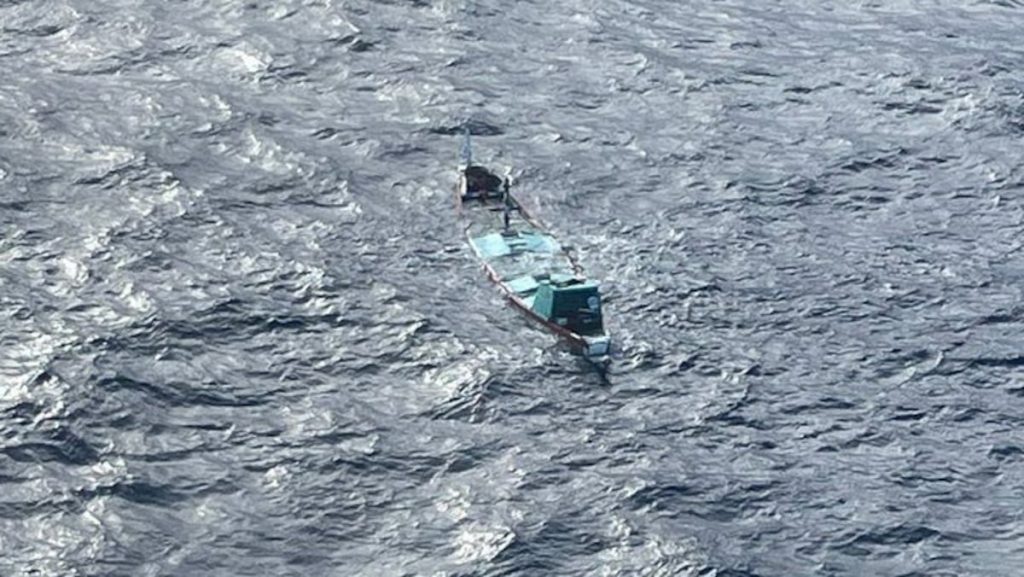Another tragedy in the Atlantic has left a new wave of people dead while trying to reach Europe; but it also tells an extraordinary story of survival. Early last Monday, a 230-meter long tanker spotted a half-sunken boat in which nine men were still alive. They were rescued by a Maritime Rescue helicopter and their initial accounts upon reaching land described an odyssey that seemed unbelievable. The boat, with 60 people on board, had capsized, and these nine survivors had managed to flip it back over and stay afloat for hours. The story raised suspicions among the police, partly because it was a huge boat and therefore difficult to overturn, but after questioning six of the nine survivors, the pieces fit together. “The testimonies are consistent and spontaneous. In other words, credible,” explains a police source.
The boat departed from the fishing town of M’bour, in Senegal, in the early hours of April 18. This area was the epicenter of boat departures with migrants heading to the Canary Islands at the end of 2020, but for a few months, the flow of boats from Senegal had slowed down. According to the survivors, there were 60 people on board, including four minors. Compared to other boats that have arrived on the archipelago in recent months, carrying up to 300 people, this one was not as overloaded and they had enough gas and food. However, water ran out, and they soon realized that they were being led by a captain with little navigation skills, as the survivors have told the police.
Ten days after their departure, when they should have already reached any of the Canary Islands, the boat became unstable and capsized to the right side. It was 5 pm on April 28. It is not clear why, although the survivors mentioned several reasons that could have happened all at once. A gust of wind, a wave, and bad cargo, meaning the weight of the passengers became unbalanced, tilting the boat irreparably. And above all, as mentioned by police sources, they cited the “lack of skill” of the captain in that situation. With the capsized boat, everyone fell into the water. They say the captain was the first to die because he hit the motor propellers, but after him, almost everyone drowned, including the brother of one of the survivors. 51 more people sunk in the Atlantic, adding to the 179 dead or missing that the International Organization for Migration (IOM) has verified so far this year. The IOM is aware that its figures are much lower than the actual numbers, “but it is a route where it is difficult to find firm evidence of all shipwrecks,” says Flavio Di Giacomo, spokesperson for this UN agency. An example of this is the recent discovery in Brazil of a boat with nine decomposing bodies, a reminder of the dozens of boats that are lost every year trying to reach Europe. The route to the Canary Islands is one of the most dangerous migration routes in the world.
The extraordinary part is how these nine men managed to recover from the chaos of a shipwreck. And then, to flip over a boat that, although made of wood and highly buoyant, weighs several tons. They haven’t provided many details, but the six interviewed survivors agree that they managed to turn it over and climb onto the semi-sunken remains. That’s how they survived until the crew of the Beskidy tanker, on its way to Cartagena, spotted them around 7am on the 29th, about 60 nautical miles (111 kilometers) from El Hierro. According to this account, they did not spend two days among the remains of their shipwreck, as initially reported, but more than 12 hours, including the night. The ship radioed for help. The Salvamar Adhara set out to them immediately and two hours later, the Helimer 206 helicopter flew over them and took them ashore. This Wednesday, six of the rescued individuals remained in the hospital, although their lives are not in danger according to health sources.















